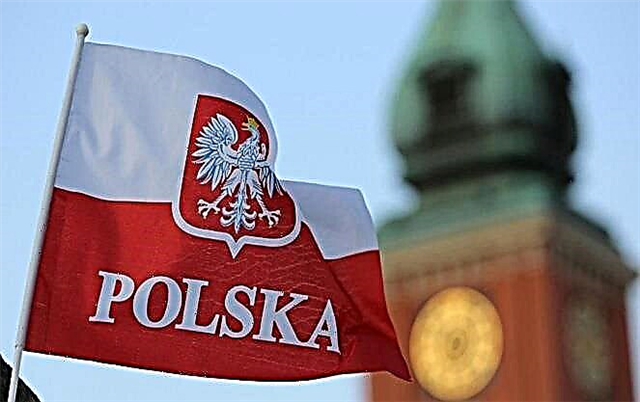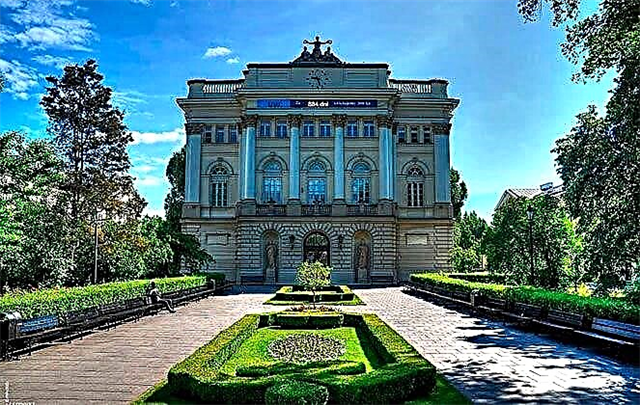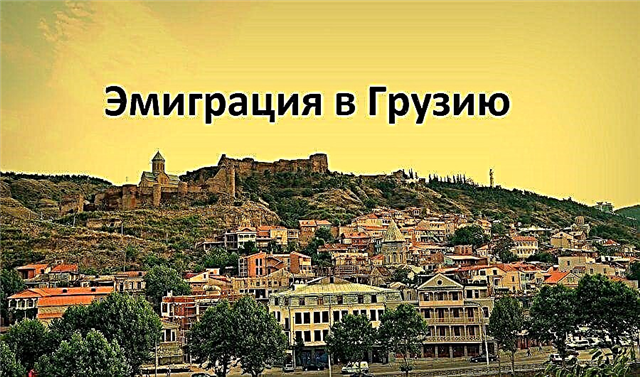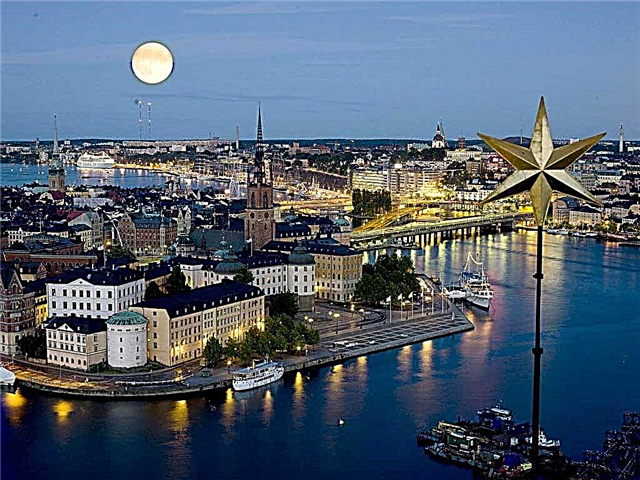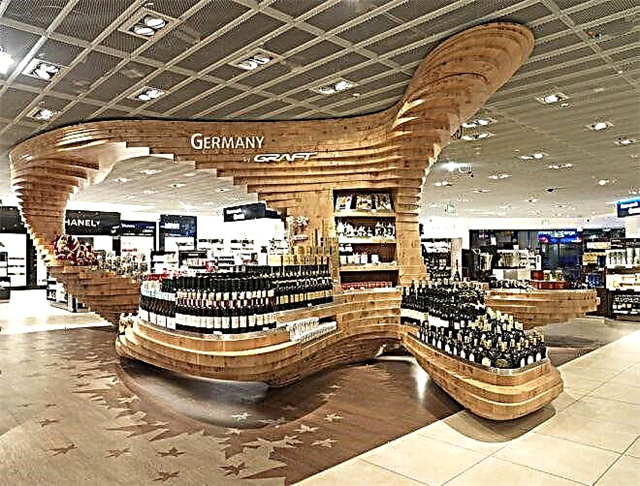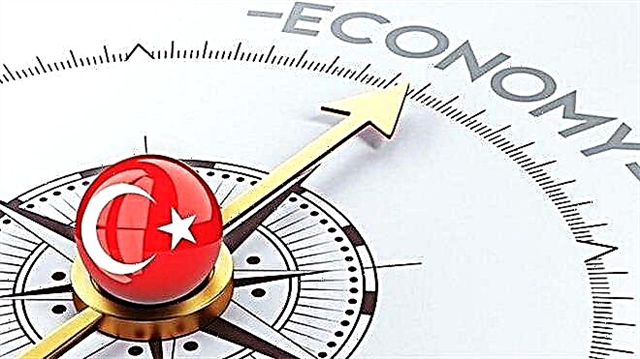According to the International Monetary Fund, Turkey's economy is one of the strongest in its region and is among the fastest growing, despite the current state of recession. Favorable position on the world map, diversified structure, inflow of foreign funds and cheap labor - all this has a positive effect on economic indicators, thanks to which the country is included in the list of developed countries.

Geographical location and natural resources
The Republic of Turkey occupies a strategically important position on the world map, located at the junction of the Middle and Near East, the Balkans and the Transcaucasus. Participation in international organizations:
- since 1952 - a member of NATO;
- since 1995 - a member of the WTO;
- since 1964 - an associate member of the European Union.
The total area of the state is 783,577 square kilometers. Of these, 97% are in Asia and 3% in Europe. In the south, the country is washed by the Mediterranean Sea, in the west - by the Aegean, in the north - by the Black Sea. The last two are separated from each other by the water system, which includes the Dardanelles and the Bosphorus, the Sea of Marmara. Turkey's neighbors are:
- in the northwest - Bulgaria and Greece;
- in the east - Armenia, Georgia, Azerbaijan, Iran;
- in the south - Syria and Iraq.
Turkey borders with Russia and Ukraine only on a small section of the maritime territory.
As for natural resources, first let's find out if there is oil in Turkey. The main oil fields are located in the southeastern part of the country. But they are enough to cover only 15% of the needs of the state. There are 60 oil and 7 gas fields on the territory of the Republic.
In total, about 53 types of minerals are mined here. Among them:
- coal;
- lead;
- iron;
- manganese;
- zinc;
- antimony;
- Mercury;
- molybdenum;
- lignites;
- different types of mineral raw materials;
- marble;
- copper.
Turkey produces almost 25% of the world's total mercury reserves. Significant deposits of tungsten are located here, and the number of copper deposits reaches hundreds. Sulfur, saltpeter, table salt, chromite, bauxite, brown coal, asbestos, phosphates are also mined in Turkey.
This state is one of the leading exporters of chrome ore and concentrates based on it. The reserves of this mineral are estimated at 26 million tons (4th place in the world).
Main industries and level of the economy
 The republic is an agro-industrial state. In the 80s of the last century, the Turkish economy underwent a serious reform: the agricultural sector, which previously played a dominant role, was transformed, and large industry and services (banking, communications, tourism, medical) came to the fore. This helped to achieve an increase in GDP.
The republic is an agro-industrial state. In the 80s of the last century, the Turkish economy underwent a serious reform: the agricultural sector, which previously played a dominant role, was transformed, and large industry and services (banking, communications, tourism, medical) came to the fore. This helped to achieve an increase in GDP.
After the global crisis in the 2000s, Turkey has experienced a fall in the lira, difficulties in economic relations and political turmoil. In the period from 2021 to 2021, the economy of the state grew at a rate that is still difficult to find analogues in the whole world.
Already in 2021, an increase of 11% was noted, which allowed the Turkish economy to become the fastest growing in the G20-G20.
In 2021, the country had to go through important political events: an attempted coup d'état, security problems and a deterioration in relations with the Russian Federation. But already in 2021, the Fitch Ratings agency made a forecast, which states that in the next 5 years, the level of economic development in Turkey will grow by 4.8% annually.
According to experts from the international agency Moody’s, the prospects for 2021 in Turkey are not very bright. They claim that growth rates will decline by 2% in the first two quarters. The currency crisis that the state was plunged into by the policies of incumbent President Erdogan last August has reduced demand for export items such as household appliances and cars. Moody's experts predict economic recovery with an increase of 3% only in 2021.
After the transition to a system of government headed by one person - the president - Turkey has largely lost investor confidence.
Turkey's external debt as of February 2021 is $ 448.4 billion. The still weak lira threatens to delay payments on loans in hard currency, which is the basis for predicting an economic downturn in 2021.
On March 5, 2021, President of the United States Donald Trump announced that he had withdrawn Turkey and India from the US program, which allowed exporting many types of products to the American market without paying duties. Such a policy will seriously hit Turkey's exports and currency inflows into the country.
Gross product
The GDP growth forecast for 2021 and 2021 has slightly changed due to the unstable situation with the local currency. According to the Minister of Finance of the country Berat Albayrak, it will decrease from 5.5 to 2.3%.
The table shows comparative GDP data by year:
| Year | GDP size, US $ billion | The change, % |
|---|---|---|
| 2018 | 713.51 | -16.21 |
| 2017 | 851.52 | -1.37 |
| 2016 | 863.39 | 0.46 |
| 2015 | 859.45 | -7.99 |
| 2014 | 934.08 | -1.71 |
| 2013 | 950.33 | 8.77 |
| 2012 | 873.7 | 4.95 |
| 2011 | 832.5 | 7.8 |
| 2010 | 772.29 | 19.83 |
| 2009 | 644.47 | -15.72 |
| 2008 | 764.64 | 13.28 |
The share of GDP by sectors of the economy looks like this (data for 2021 compared to 2021):
| Industry | Change in the share of the industry in the structure of GDP,% |
|---|---|
| Manufacturing industry | -7 |
| Construction | -6 |
| Automotive | -18 |
| Metalworking industry | -13 |
| Release of electrical goods | -7 |
| Tourism | 4.85 |
| Agriculture | -10.44 |
Growth rate of GDP per capita in Turkey:
| Year | Dynamics of changes in GDP per capita, in% | GDP size in US dollars |
|---|---|---|
| 2017 | 5.8 | 14071.17 |
| 2016 | 1.6 | 14071.17 |
| 2015 | 4.4 | 13894.6 |
| 2014 | 3.5 | 13312.03 |
| 2013 | 6.7 | 12865.68 |
| 2012 | 3.2 | 12052.33 |
| 2011 | 9.5 | 11683.23 |
| 2010 | 7 | 10672.06 |
| 2009 | -5.9 | 9973.34 |
| 2008 | -0.4 | 10599.29 |
In 2021, this figure was $ 14,933.27.
Features of budgeting
The leading role in the economic sphere of the country is played by the service sector, including communications, tourism and transport. The budget of Turkey is also formed by production and industry, agriculture.
In the manufacturing sector, construction and manufacturing make the largest contribution - 84%.
The state receives good profits from the chemical, textile, leather, food, pharmaceutical sectors, as well as from shipbuilding, energy, metallurgy, automotive and electrical goods production.
Tourism deserves special attention, which does not represent the main source of income for the country, but makes a significant contribution to the overall budget. According to the Turkish Institute of Statistics, the share of tourism revenues in 2021 reached $ 29.5 billion, which is 17% more than in 2021. 81.8% of this amount came from foreign tourists.
In 2021, the Turkish authorities have set a goal to generate at least $ 35 billion in net profit in the tourism industry.
The purchase of real estate in Turkish territory also shows stable growth. The share of this sector in the total budget is 19.5%. The most popular properties are in Istanbul and on the Mediterranean coast.
Indicators for other industries:
- agriculture - food imports account for $ 10.7 billion, exports - $ 15.2 billion;
- plastics production - about $ 30 billion a year;
- fertilizer exports bring in about $ 25 billion annually;
- electronics sales - $ 7-8 billion (computers, household appliances, defense electronics);
- pumice and barite - $ 19.4 million (the first result in the world);
- the export of the chemical industry - $ 17.5 billion (the main consumers are Iraq, Egypt, Germany);
- the textile industry brings to the budget about 24 billion dollars a year.
In the early 2000s, the Turkish energy sector went through several stages of liberalization, structuring and privatization. Today, electricity in the country is produced using fossil resources: natural gas, coal, hydroelectric power plants, wind generators.
Products that are produced in Turkey
 In the agricultural sector, the republic is the leader in the sale of dates, hazelnuts, apricots, cherries, quince and pomegranates, ranks second in the world in the sale of chickpeas, cucumbers and watermelons, and the third in the export of tomatoes, eggplants, pistachios.
In the agricultural sector, the republic is the leader in the sale of dates, hazelnuts, apricots, cherries, quince and pomegranates, ranks second in the world in the sale of chickpeas, cucumbers and watermelons, and the third in the export of tomatoes, eggplants, pistachios.
The auto industry is quite well developed here. Turkey is one of the largest vehicle manufacturers in Europe. In total, there are 13 automobile factories operating here, which manufacture products of the following brands:
- Honda;
- FIAT;
- Ford;
- Opel;
- Daimler;
- Renault,
- Toyota;
- MAN and others.
In terms of plastics production, Turkey shares the second position in Europe with Italy and Germany.
Here is a list of what Turkey exports to the world market (data for 2021 in% of the volume of production of these products):
- 7.52 - cars, racing and trucks;
- 4.2 - gold, processed and unprocessed, in powder form;
- 2.63 - jewelry;
- 2.33 - oil and products from it;
- 1.83 - knitted and crocheted knitwear;
- 1.57 - clothes.
The largest manufacturers of goods that come from Turkey to European, Russian and other markets include:
- Auto parts - Donmez Clutch, TPI Otomotiv, Kolayli Spider, Voyager, Cotech.
- Household appliances - Goldmaster, Airties, Simfer, Namsan Metal, Korkmaz.
- Household chemicals - Titiz, Firuze Export, Bingo, Arba Kimya, Beyaz Kagit.
- Building materials - Tureks, Perek Trade and Consultant, Basaranlar, Deckline.
- Agricultural machinery - Hisarlar, GMS Gencler Tarim, Landforce, Alpler, Corner Machinery.
- Foodstuffs - Tunclar, OZfresh, Ilsa, Yayanlar Kuruyemis, Cevher Gida, Ugur Bekiraga, Avsalrar.
- Clothes - Q-Lady, Rozalio Baressa, Darkmen & Darkwin, Gumus Tekstil, Gonultas Tekstil, Jasmini.
- Shoes - Hotic, Cabani, Polaris, Velinda, Beyoglu Ayakkabi.
- Paint - Power Boya, Iba Kimya, Pulver Kimya, Bianca Boya, Polisan.
- Carpets - Dilek Carpet, Boyteks Tekstil, Sacli, Eruslu Tekstil.
- Home textiles - Ceyizsan Textile, Othello, Bambu Tekstil, Maya Tekstil, Winbrella.
What is the Turkish economy
One of the factors that has a beneficial effect on the rapid growth of the Turkish economy is the application of advanced technologies in many sectors of production. The authorities are actively implementing a program for obtaining energy from alternative renewable sources.
So, for example, two wind farms (in Gokcead and Sarytepe) make it possible to generate about 200 megawatts of electricity, which allows them to cover their own needs, and export the surplus to Iran. And in the province of Konya, one of the largest solar stations in the country operates.
When assessing the economic potential of the country, it is necessary to take into account the fact that Turkey is still not a full member of the EU. According to the European Commission, market relations that meet European standards have not yet been built.
Although the market for goods and services is long established, it is subject to local rules and stereotypes, which makes it difficult for foreign companies to enter the Turkish economic arena.
Of the positive changes, the European commissioners note the emerging flexibility in the labor market and the completion of European integration in the medium term. Compared to other candidates for accession to the EU (Bulgaria, Romania), the Turkish economy can be considered more powerful and stable.
Turkey itself is not very actively seeking to fulfill the criteria set by the European Union and is developing at its own pace.
As for the place of this state on the world economic map, it ranks fifth in the world in growing vegetables and ninth in fruit. Turkey is also in second position in the production of tomato paste and ketchup, and ranks first in Europe in the cultivation of tobacco and cotton.
Banking sector of the country
The state budgetary system is 88% filled with the banking sector. There are 47 banks operating here, of which:
- 3 state;
- 4 state investment;
- 9 private;
- 16 foreign;
- 5 private investment;
- 4 foreign investment;
- 2 banks managed by the State Deposit Insurance Fund;
- 2 participation banks.
The key role in this entire system is assigned to the Central Bank of Turkey. Its main function is to regulate issues related to the foreign exchange market, maintain a stable pricing policy and economic development of the state.
The central bank issues banknotes, is the "last resort" in lending and has the authority to request any information from other financial institutions to monitor their activities.
Industrial sector
 The first oil in Turkey was produced in 1940 in the Ramandag region in the north-east of the country. Today, all oil fields in the Republic belong to the state. They are managed by the Institute of Mining Research and Exploration.
The first oil in Turkey was produced in 1940 in the Ramandag region in the north-east of the country. Today, all oil fields in the Republic belong to the state. They are managed by the Institute of Mining Research and Exploration.
The second important oil production area in the country is Adana in the south of Turkey. Geological work is also carried out on the Black Sea coast near the city of Mapavri.
Exploration activities for the development of oil and gas fields began in the east of the country (the Mediterranean coast), which may lead to aggravation of relations with Cyprus.
The light industry in the country is one of the fastest growing industries. The rise in production is largely ensured by medium and small businesses.
At the end of the last century, mainly textiles, fibers, yarns were exported. Today Turkey is a supplier of finished products. The main specialization of factories:
- clothes for children and adults;
- shoes;
- accessories.
The importers of textiles from Turkey are Ukraine, Russia, and the European Union. Light industry today employs more than a third of all workers employed in industry as a whole.
Considering the fullness of the market with cheap products from China, Bangladesh, India and Vietnam, many Turkish manufacturers have reoriented to a more expensive segment - branded clothing. Light industry goods account for 40% of all exports.
It is difficult for many to perceive this territory as an industrial state. Few people know that the 5 largest settlements in the country are also industrial cities of Turkey, and not just tourist points on the map:
- Istanbul - a large number of factories for the production of clothing and textile products are concentrated around it.
- Ankara - a brewery, a cement plant, metallurgical and arms factories are located here.
- Izmir is famous for the production of trucks and buses.
- Bursa is a place of concentration of garment factories.
- Adana is a city with a developed textile, chemical and food industries.
Agrarian sphere
Although the territory of the country is a mountainous area, agriculture makes it possible to fully provide the inhabitants of the state with their own food. This is facilitated by fertile soils and a favorable climate.
The agricultural sector employs about 60% of the country's population. Here they grow:
- olives;
- potato;
- hazelnut;
- apricots;
- almond;
- grape;
- cherries;
- figs;
- corn;
- tobacco.
Turkey is also famous for its wheat and cotton fields. In general, two-thirds of the total income of the industry comes from the work of the agricultural sector. The second place is occupied by animal husbandry.
The role of forestry and fishing is insignificant.
Travel business
Turkey has all the prerequisites for the development of tourism:
- access to the four seas;
- subtropical climate;
- 7,200 km of coastal beach line;
- thermal springs;
- a large number of attractions.
The most popular resorts are: Marmaris, Antalya, Alanya, Side, Belek, Kemer, Bodrum. Russians are the absolute leaders in tourism to the Turkish state. In 2021, the republic was visited by 5 million 986 thousand citizens of the Russian Federation.
Employment issue
 The population of the country is currently 83.7 million people. The State Bureau of Statistics predicts that this figure will increase by almost 1.5 million in 2021.
The population of the country is currently 83.7 million people. The State Bureau of Statistics predicts that this figure will increase by almost 1.5 million in 2021.
The share of the economically active population in 2021 was 68%. The Turkish nation is distinguished by good health and stamina. Turks rarely get sick, live long and die mainly from old age.
The number of children under 15 in the country is 26.6% of the total population. But in recent years, there has been a decline in the birth rate.According to the statistics of the Ministry of Education, every year the number of first-graders is reduced by 70-80 thousand people. This issue is especially acute in the most economically developed regions - in the provinces located in the Aegean and Marmara Seas.
The low birth rate is reflected in the rate of natural population growth, which fell to 2.2% in 2021 compared to 4.6% in 2021.
The unemployment rate in 2021 is at around 12.3%. In previous years, the statistics looked like this:
| Year | Unemployment rate,% |
|---|---|
| 2018 | 11.4 |
| 2017 | 10.6 |
| 2016 | 12.7 |
| 2015 | 11.3 |
| 2014 | 10.9 |
| 2013 | 9.6 |
Among young people, unemployment reaches 23.6%. The figures indicate a tendency towards an increase in the number of the unemployed population.
The retirement age in the country is 58 for women and 60 for men. But if a woman has 5 or more children, she can retire at 48 years old.
The minimum pension threshold today is 1,603 lira (approximately $ 294). The Turkish government decided to set this limit at the level of the minimum wage.
Imports and exports of the Republic of Turkey
According to the ECI (Economic Complexity Index) rating, Turkey is ranked 27th in the world in terms of economic development. As of 2021, Turkey exported goods worth $ 166 billion and imported goods worth $ 214 billion.
As a member of the World Trade Organization, the Turkish state has concluded free trade agreements with dozens of countries.
What Turkey buys and sells
The economic activity of the Republic of Turkey allows not only to meet the needs of its population, but also to carry out foreign trade in goods.
Turkey is an exporter of these types of goods (data for 2021), in billions of dollars:
- cars - 13.2;
- gold - 6.96;
- spare parts for cars - 4.64;
- jewelry - 3.39;
- clothing and textiles - 5.13;
- food products - 7.89.
By country, the export geography looks like this, in billions of dollars:
- Germany - 17.4;
- Great Britain - 10.1;
- Italy - 9.4;
- United Arab Emirates - 9.2;
- Iraq - 9.1
Turkey's top import partners are China ($ 23 billion), Germany ($ 22.5 billion), Russia ($ 13.2 billion), Italy ($ 11.4 billion) and the United States (11. $ 3 billion).
Turkey's imports are represented by the following goods:
- equipment and machinery - 26%;
- metals - 12%;
- vehicles - 13%;
- fuel - 7%;
- chemical industry products - 5%.
More than 36% of what is imported into Turkish territory comes from the EU, which is facilitated by the signing of a duty-free trade agreement. 11.6% of the total volume is imported from Russia, from China - 9.3%, Germany - 9.5%, Italy - 5.5%, USA - 6.6%.
Economy of Russia and Turkey
Relations between the Russian Federation and Turkey have been going on for more than five centuries. Today the Turkish state is the fifth partner of the Russian Federation in terms of trade turnover, ahead of Belarus, Ukraine, and Kazakhstan.
Turkey is the second largest gas sales market for Russia and a favorite vacation spot for Russians. Given the large territorial difference and resource potential, it will be interesting to compare the economies of Turkey and Russia (data for 2021), in billions of dollars:
| Criterion | Turkey | RF |
|---|---|---|
| Gdp | 851.52 | 10,743 |
| Gold reserves | 105 (11% of GDP) | 458 (31% of GDP) |
| External debt of the state | 144.4 (50% of GDP) | 49.8 (3.2% of GDP) |
| Trade balance | - 84 (- 8.8% of GDP) | 130 (8.8% of GDP) |
| The state budget | income - 173.9; expenses - 190.4; deficit minus 16.5. | income - 255.2; expenses - 232.15; surplus - 23.054. |
Outcomes
The economy of the Republic of Turkey is currently in the process of a recession caused by a significant drop in the national currency in August 2021. The emerging rise in unemployment and Donald Trump's policy aimed at withdrawing Turkey from the duty-free program are grounds for unfavorable economic forecasts for the republic for 2021.

